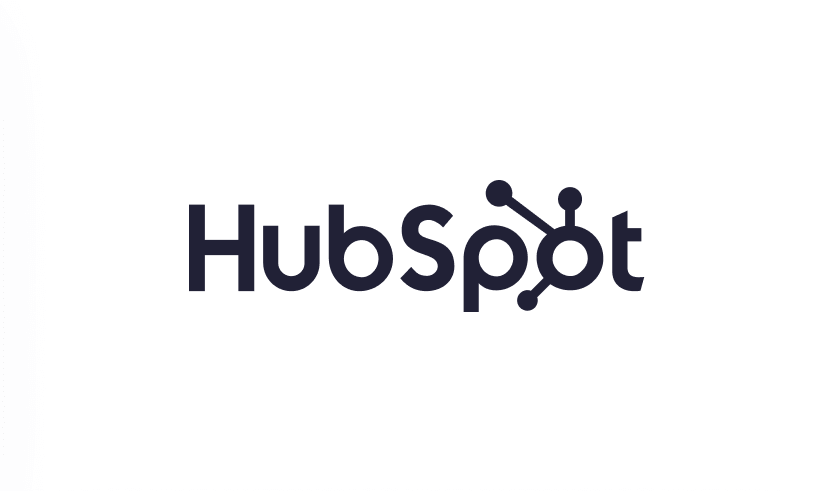2025 Email Marketing Audit Checklist: 8 Tips for Success
Unlocking Email Marketing Potential: Your 2025 Guide
This email marketing audit checklist provides a comprehensive framework for optimizing your email program and boosting revenue. A robust email strategy is essential for e-commerce success. However, an ineffective approach can damage your sender reputation and waste resources. This checklist helps you identify weaknesses and maximize your email marketing ROI. These eight actionable steps provide the insights you need to transform your email marketing into a revenue-generating machine.
This detailed guide covers crucial elements of a successful email marketing audit. We'll explore everything from list hygiene and deliverability to automation and analytics. By following this email marketing audit checklist, you will be able to:
Pinpoint weaknesses: Identify gaps in your current email strategy that are hindering performance.
Boost deliverability: Improve your sender reputation and ensure your emails reach the inbox.
Optimize content: Craft compelling emails that resonate with your audience and drive conversions.
Automate workflows: Streamline your email processes and nurture leads effectively.
Maximize ROI: Measure your email marketing success and demonstrate its value.
Stay compliant: Ensure your email practices adhere to legal requirements.
We will dive deep into eight key areas, each providing specific, actionable insights:
List Hygiene and Segmentation Assessment
Email Deliverability and Sender Reputation Analysis
Content Quality and Design Evaluation
Automation Workflow Assessment
Performance Metrics and Analytics Review
Compliance and Legal Requirements Audit
Integration and Technology Stack Evaluation
Competitive Analysis and Industry Benchmarking
Let's begin transforming your email marketing into a powerful driver of growth.
1. List Hygiene and Segmentation Assessment
A cornerstone of any successful email marketing audit checklist is a thorough evaluation of your list hygiene and segmentation practices. This crucial step involves analyzing your email list quality, measuring subscriber engagement, and scrutinizing the effectiveness of your current segmentation strategy. It encompasses understanding how your list grows, verifying the authenticity of your subscribers, monitoring bounce rates, and assessing how effectively you've categorized your audience for targeted messaging. Ultimately, it helps identify areas for improvement and ensures your email marketing efforts reach the right people with the right message.
Why List Hygiene and Segmentation Matter
A healthy email list translates directly to improved deliverability, higher open rates, increased click-through rates, and ultimately, a stronger ROI. Poor list hygiene, characterized by a high number of inactive or invalid email addresses, can lead to your emails being flagged as spam, damaging your sender reputation and hindering your ability to reach your target audience. Effective segmentation allows you to personalize your messaging, delivering content that resonates with specific subscriber groups, leading to higher engagement and conversions.
Implementing Effective List Hygiene and Segmentation
Maintaining a clean and segmented list requires ongoing effort. Start by regularly cleaning your list. Aim to remove subscribers who have been inactive for six months or more. Implement a double opt-in process from the outset to ensure high list quality and minimize the risk of fake sign-ups.
Segment your audience beyond basic demographics. Consider engagement metrics such as open and click-through rates to create dynamic segments that reflect genuine interest. Monitor your bounce rates weekly, promptly removing hard bounces to prevent deliverability issues. Before removing inactive subscribers, try implementing re-engagement campaigns to recapture their interest. You can Learn more about... list hygiene and segmentation techniques for advanced strategies.
Examples of Effective Tools and Practices
Several email marketing platforms offer robust features to assist with list hygiene and segmentation. Mailchimp, for example, provides list cleaning tools that automatically identify low-engagement subscribers. HubSpot's segmentation tools allow you to track behavioral patterns and create highly targeted segments. Constant Contact offers list hygiene recommendations based on engagement metrics.
Actionable Tips for Your Email Marketing Audit Checklist
Regular Cleaning: Clean your list quarterly by removing inactive subscribers.
Double Opt-In: Implement double opt-in to ensure list quality from the beginning.
Engagement-Based Segmentation: Segment based on engagement levels for more targeted messaging.
Bounce Rate Monitoring: Monitor bounce rates weekly and address hard bounces immediately.
Re-Engagement Campaigns: Implement re-engagement campaigns before removing inactive subscribers.
By prioritizing list hygiene and segmentation in your email marketing audit, you can significantly improve your email marketing performance and drive better results. This proactive approach ensures your messages reach engaged subscribers, maximizing your impact and contributing to a healthier email ecosystem.
2. Email Deliverability and Sender Reputation Analysis
A critical component of any email marketing audit checklist is a thorough analysis of your email deliverability and sender reputation. This involves examining the technical aspects that influence whether your emails reach the inbox or get flagged as spam. It encompasses evaluating your sender score, authentication protocols (SPF, DKIM, DMARC), bounce rates, spam complaint rates, and your overall relationship with Internet Service Providers (ISPs). Understanding these factors is essential for maximizing your email visibility and ensuring your messages reach your intended audience.
Why Deliverability and Sender Reputation Matter
Your sender reputation acts as a digital stamp of approval. A positive reputation signals to ISPs that your emails are legitimate and desired by recipients. This significantly impacts your inbox placement rate, ensuring your marketing messages reach your subscribers, not their spam folders. A poor sender reputation, on the other hand, can severely hinder your email marketing efforts, leading to lower open rates, reduced engagement, and ultimately, a diminished return on investment.
Implementing Effective Deliverability Practices
Maintaining a strong sender reputation requires proactive measures and consistent monitoring. Start by implementing proper authentication protocols such as SPF, DKIM, and DMARC. These protocols verify your identity as a sender and protect against email spoofing, enhancing your credibility with ISPs. Regularly monitor your bounce rates and promptly address hard bounces to prevent deliverability issues. Manage your spam complaint rate by ensuring your subscribers have explicitly opted in to receive your emails. Learn more about... Email Deliverability and Sender Reputation Analysis for further guidance.
Examples of Effective Tools and Practices
Many tools and services are available to assist with email deliverability and reputation management. Return Path (now Validity) offers deliverability monitoring for enterprise clients, helping them optimize their email infrastructure and improve inbox placement. SendGrid provides deliverability consulting services and has helped companies like Spotify achieve significant improvements in inbox placement rates. Mailgun's reputation monitoring tools assist companies like Lyft in maintaining high delivery rates.
Actionable Tips for Your Email Marketing Audit Checklist
Authentication: Implement SPF, DKIM, and DMARC authentication protocols.
Bounce Rate Monitoring: Monitor bounce rates weekly and remove hard bounces.
Spam Complaint Management: Keep spam complaint rates below 0.1%.
Sender Score Monitoring: Regularly check your sender score using reputable tools.
IP Warm-up: Gradually warm up new IP addresses to establish a positive sending history.
By prioritizing email deliverability and sender reputation in your email marketing audit, you are investing in the long-term health and success of your email marketing program. This proactive approach ensures your messages consistently reach your subscribers' inboxes, maximizing the impact of your campaigns and driving stronger business results.
3. Content Quality and Design Evaluation
A critical component of any email marketing audit checklist is a thorough content quality and design evaluation. This involves scrutinizing every element of your emails, from subject lines and preheaders to body copy, visuals, and calls to action. This assessment ensures your message resonates with your audience, is visually appealing, and drives conversions. It's about understanding how effectively your content engages subscribers and motivates them to take desired actions.
Why Content Quality and Design Matter
High-quality content and compelling design are essential for email marketing success. A captivating subject line grabs attention and encourages opens. Well-written, personalized copy fosters engagement and builds relationships. Visually appealing design enhances readability and reinforces your brand identity. A clear call to action guides subscribers towards desired conversions.
Implementing Effective Content and Design Strategies
Start with compelling subject lines that create curiosity and accurately reflect email content. Craft personalized body copy that speaks directly to the subscriber's needs and interests. Use high-quality images and videos to enhance visual appeal. Ensure your emails are mobile-responsive and render correctly across various email clients. Learn more about... optimizing your content and design for conversions.
Examples of Effective Tools and Practices
Several tools can enhance your content and design. Grammarly helps refine your copy for clarity and accuracy. Canva simplifies graphic design, enabling the creation of visually appealing email templates. Litmus allows you to preview your emails across different email clients, ensuring consistent rendering.
Actionable Tips for Your Email Marketing Audit Checklist
Subject Line Optimization: Keep subject lines concise and impactful, under 50 characters for mobile optimization.
Personalization: Go beyond using first names; leverage behavioral data for truly personalized content.
Visual Hierarchy: Use headings, subheadings, and bullet points to improve readability and guide the reader's eye.
Mobile Responsiveness: Ensure your emails are optimized for mobile devices, where a majority of emails are opened.
Call to Action: Include clear, concise, and action-oriented CTAs above the fold.
By prioritizing content quality and design in your email marketing audit, you can dramatically improve your open rates, click-through rates, and overall campaign performance. This focus on delivering valuable and engaging content ensures your messages resonate with your audience, strengthens your brand, and drives meaningful results.
4. Automation Workflow Assessment
A crucial component of any email marketing audit checklist is a comprehensive assessment of your automation workflows. This involves scrutinizing your automated email sequences, the triggers that initiate them, and how effectively they map to the customer journey. This checkpoint evaluates the performance of drip campaigns, behavioral triggers, lifecycle emails, and nurture sequences. The goal is to ensure optimal timing, relevance, and conversion optimization throughout the customer journey.
Why Automation Workflow Assessment Matters
Effective email automation allows you to deliver timely, personalized messages at scale, nurturing leads, onboarding customers, and driving conversions. A well-structured automation workflow can significantly improve customer engagement, reduce manual effort, and boost overall email marketing ROI. Conversely, poorly designed workflows can lead to subscriber fatigue, high unsubscribe rates, and missed opportunities.
Implementing Effective Automation Workflows
Building effective automation workflows requires careful planning and execution. Start by mapping out your customer journeys, identifying key touchpoints and opportunities for automated communication. Consider the various stages of the customer lifecycle, from initial awareness to post-purchase engagement.
Segment your audience to tailor automated messages to specific needs and interests. Test all automation triggers thoroughly before launching to ensure they function as intended. Include exit conditions to prevent over-messaging and maintain a positive subscriber experience. Use behavioral data to optimize send timing and message content for maximum impact.
The infographic above illustrates a simplified email automation workflow. It highlights the three core steps: trigger setup (e.g., user signup, abandoned cart), sequence steps (drip messages, timing logic), and performance monitoring (open, click rates). These three steps represent the foundation of any successful automated email sequence. Monitoring performance metrics allows for continuous improvement.
Examples of Effective Automation
Companies like Amazon excel at abandoned cart recovery sequences, sending personalized product recommendations to recapture lost sales. Sephora's beauty insider program utilizes behavior-triggered product suggestions, driving repeat purchases. Duolingo uses re-engagement campaigns based on learning streaks and inactivity, encouraging users to continue their language learning journey. Shopify guides new merchants through setup with a comprehensive onboarding sequence.
Actionable Tips for Your Email Marketing Audit Checklist
Map Customer Journeys: Visualize the customer experience before building automation workflows.
Thorough Testing: Test all triggers and sequences to ensure they function correctly.
Exit Conditions: Implement exit conditions to prevent over-messaging and subscriber fatigue.
Behavioral Optimization: Use behavioral data to refine send timing and personalize content.
Regular Review: Regularly review and update automation content to maintain relevance.
Lead Scoring: Integrate lead scoring within workflows to prioritize high-potential leads.
By thoroughly assessing your automation workflows during your email marketing audit, you can identify areas for improvement, optimize performance, and enhance the overall customer experience. This systematic approach ensures your automated messages are timely, relevant, and contribute to your business goals.
5. Performance Metrics and Analytics Review
A crucial component of any effective email marketing audit checklist is a comprehensive performance metrics and analytics review. This involves meticulously analyzing key performance indicators (KPIs), evaluating tracking mechanisms, and extracting data-driven insights from your email campaigns. This in-depth examination encompasses scrutinizing open rates, click-through rates, conversion tracking, revenue attribution, and leveraging advanced analytics to gauge campaign effectiveness and pinpoint areas for optimization within your email marketing strategy. It helps you understand what's working, what's not, and how to improve your results.
Why Performance Metrics and Analytics Matter
Data-driven decision-making is paramount in modern email marketing. Tracking and analyzing performance metrics provides invaluable insights into subscriber behavior, campaign effectiveness, and overall ROI. Understanding these metrics enables you to refine your strategies, personalize your messaging, and optimize your campaigns for maximum impact. Without proper tracking and analysis, you're essentially operating in the dark, unable to fully understand the impact of your efforts.
Implementing Effective Performance Measurement
Effective performance measurement starts with proper tracking implementation. Ensure you're using UTM parameters for all email links to accurately track the source of your traffic. Go beyond basic metrics like opens and clicks. Focus on measuring business outcomes, such as conversions and revenue generated directly from your email campaigns. Implement cohort analysis to understand the long-term value of your subscribers over time. Utilize cross-device tracking to attribute conversions accurately, even when subscribers interact with your emails across multiple devices.
Examples of Effective Tools and Practices
Companies like Netflix, Uber, Pinterest, and Salesforce exemplify data-driven email marketing. Netflix utilizes sophisticated A/B testing to optimize email content for viewing engagement. Uber leverages cohort analysis to track rider retention through email campaigns. Pinterest employs conversion tracking to measure the impact of email on user-generated content. Salesforce utilizes comprehensive dashboard tracking to correlate email performance with sales outcomes. These examples highlight the power of data-driven decision-making in email marketing.
Actionable Tips for Your Email Marketing Audit Checklist
UTM Parameters: Set up UTM parameters for all email links to track campaign performance accurately.
Business Outcome Tracking: Track beyond opens and clicks - measure conversions and revenue.
Cohort Analysis: Use cohort analysis to understand long-term subscriber value and behavior.
Cross-Device Tracking: Implement cross-device tracking for precise attribution across devices.
Automated Reporting: Create automated reports for key stakeholders to share performance insights.
Benchmarking: Benchmark your performance against industry standards to identify areas for improvement.
By prioritizing performance metrics and analytics in your email marketing audit checklist, you empower yourself to make informed decisions, optimize your campaigns continuously, and drive significant improvements in your email marketing ROI. This data-driven approach ensures your email marketing efforts are aligned with your business goals and contribute to sustainable growth.
6. Compliance and Legal Requirements Audit
A critical component of any email marketing audit checklist is a thorough compliance and legal requirements audit. This involves meticulously examining your email marketing practices against prevailing legal requirements and industry regulations. This checkpoint ensures adherence to crucial anti-spam laws like CAN-SPAM, data protection regulations such as GDPR and CCPA, and stringent consent management protocols. It also encompasses reviewing your opt-in processes, unsubscribe mechanisms, and overall data handling practices. Ultimately, this audit protects your brand reputation and fosters trust with your subscribers.
Why Compliance and Legal Adherence Matters
Maintaining legal compliance isn't just a best practice; it's a necessity. Non-compliance can result in hefty fines, damage to your brand reputation, and loss of customer trust. By proactively auditing your practices, you mitigate these risks and demonstrate a commitment to respecting subscriber privacy. This builds a stronger, more sustainable relationship with your audience.
Implementing Effective Compliance Measures
Ensuring compliance requires ongoing vigilance and a proactive approach. Begin by thoroughly reviewing your current email marketing practices against relevant legislation like CAN-SPAM, GDPR, and CCPA. Scrutinize your opt-in process, ensuring it adheres to double opt-in standards where applicable. Make your unsubscribe link easily accessible and functional in every email. Document your data handling processes and ensure they align with data protection regulations.
Examples of Effective Tools and Practices
Many email marketing platforms offer built-in compliance features. Mailchimp, for example, automatically includes required disclosures in your emails. IKEA's GDPR-compliant email preference center provides a prime example of granular consent management. Buffer demonstrates transparent privacy practices with a prominent and easy-to-use unsubscribe process. Zoom's clear consent management, even during periods of rapid growth, serves as a model for maintaining compliance at scale.
Actionable Tips for Your Email Marketing Audit Checklist
Physical Address: Include your physical business address in all commercial emails.
Unsubscribe Link: Ensure unsubscribe links are prominent, functional, and easy to find.
Consent Records: Maintain detailed records of consent and opt-in confirmations.
Privacy Policy: Regularly review and update your privacy policy to reflect current practices.
Double Opt-In: Implement double opt-in for new subscribers to ensure explicit consent.
Preference Management: Offer clear and granular preference management options for subscribers.
By prioritizing compliance and legal requirements in your email marketing audit, you protect your business from legal repercussions and build trust with your audience. This proactive approach contributes to a healthier email ecosystem and demonstrates a commitment to ethical and responsible email marketing practices. This ultimately strengthens your brand reputation and fosters long-term subscriber loyalty.
7. Integration and Technology Stack Evaluation
A critical component of any email marketing audit checklist is a thorough evaluation of your technology stack and its integrations. This involves assessing how your email marketing platform connects with other crucial business systems, such as your CRM (Customer Relationship Management), e-commerce platform, analytics dashboards, and marketing automation tools. This audit checkpoint focuses on data flow, API connections, and the overall technical infrastructure to ensure seamless operations and accurate data synchronization across all platforms. A well-integrated tech stack streamlines processes, enhances data analysis, and empowers personalized email campaigns.
Why Integration Matters
Seamless integration between your email marketing platform and other business systems is essential for maximizing efficiency and leveraging data-driven insights. Connecting your CRM allows for personalized email campaigns based on customer behavior and preferences. Integrating with your e-commerce platform enables automated product recommendations and targeted promotional emails triggered by purchase history. Connecting analytics tools provides valuable data on email campaign performance, allowing for continuous optimization.
Implementing Effective Integrations
Effective integration starts with mapping the data flow between all connected systems. Identify which data points need to be shared and how they will be synchronized. For example, ensure customer data from your CRM seamlessly flows into your email marketing platform for segmented campaigns. Test integrations regularly to ensure data accuracy and identify any potential issues. Implement backup and redundancy measures to prevent data loss in case of technical failures.
Examples of Effective Integrations
Several successful integration examples highlight the benefits of a connected tech stack. Shopify's native email marketing integrations with platforms like Klaviyo enable seamless e-commerce data flow for personalized product recommendations. Salesforce's Marketing Cloud integration with Sales Cloud facilitates comprehensive lead nurturing and automated follow-up. WooCommerce integrates with Mailchimp for automated product recommendations based on browsing history. HubSpot's all-in-one platform minimizes the need for multiple integrations, streamlining data management and marketing automation.
Actionable Tips for Your Email Marketing Audit Checklist
Map Data Flows: Visualize how data moves between connected systems.
Regular Testing: Test integrations frequently to ensure data accuracy.
Backup and Redundancy: Implement measures to protect against data loss.
Documentation: Document all API connections and dependencies.
Middleware: Consider middleware platforms for complex integrations.
Performance Monitoring: Monitor integration performance and error rates.
Optimizing Your Technology Stack
By thoroughly evaluating your integration and technology stack, you can identify opportunities to streamline your email marketing processes, improve data accuracy, and enhance the effectiveness of your campaigns. This audit checkpoint ensures your email marketing efforts are supported by a robust and efficient technical infrastructure, contributing to a more impactful and data-driven email strategy. This proactive approach to email marketing audit checklist will contribute to a more robust email marketing strategy.
8. Competitive Analysis and Industry Benchmarking
A crucial element of any comprehensive email marketing audit checklist is competitive analysis and industry benchmarking. This involves strategically evaluating your email marketing performance against your competitors and the broader industry standards. By examining competitor strategies, content approaches, frequency patterns, and performance metrics, you can identify opportunities for improvement and uncover potential competitive advantages in your own email marketing execution. This process helps you understand where you stand in the market and how you can elevate your email program.
Why Competitive Analysis and Industry Benchmarking Matter
Understanding your competitors' email marketing tactics provides invaluable insights into what works within your industry. It allows you to identify best practices, uncover emerging trends, and gauge the effectiveness of different approaches. Benchmarking against industry standards sets a performance baseline, helping you assess your strengths and weaknesses relative to the market average. This knowledge empowers you to make data-driven decisions and refine your strategy for optimal results.
Implementing Effective Competitive Analysis and Industry Benchmarking
Begin by identifying your key competitors. Subscribe to their email lists across different customer journeys, experiencing their email marketing firsthand. Utilize tools like Owletter or Mailcharts for systematic monitoring and analysis of competitor email campaigns. Focus on understanding their overall strategy and content approach rather than simply copying their content.
Track competitor email frequency and timing patterns to understand how often they communicate with their audience and when they send their emails. Analyze competitor subscriber growth and engagement indicators like open rates and click-through rates. Document your findings and translate them into actionable insights for your own email strategy.
Examples of Effective Tools and Practices
Resources like Really Good Emails offer a curated collection of innovative email designs across various industries, providing inspiration and best practice examples. Mailcharts offers competitive email intelligence and tracking, enabling you to monitor competitor activity. Campaign Monitor publishes industry benchmark reports that compare email marketing performance across different sectors. Litmus's State of Email report provides comprehensive industry insights and trends.
Actionable Tips for Your Email Marketing Audit Checklist
Competitor Subscription: Subscribe to competitor email lists to experience their customer journeys.
Monitoring Tools: Use tools like Owletter or Mailcharts to track competitor email campaigns.
Strategic Focus: Analyze competitor strategies and approaches rather than simply copying content.
Frequency Tracking: Monitor competitor email frequency and timing patterns.
Engagement Analysis: Analyze competitor subscriber growth and engagement metrics.
Documentation: Document your findings and create actionable insights.
By incorporating competitive analysis and industry benchmarking into your email marketing audit, you gain a critical understanding of the competitive landscape and identify opportunities to outperform the competition. This strategic approach allows you to refine your email marketing strategy, optimize your campaigns, and ultimately drive better results.
Email Marketing Audit: 8-Point Comparison
Elevate Your Email Game: Turning Insights into Action
This email marketing audit checklist provides a robust framework for analyzing and optimizing your email program. From list hygiene and segmentation to deliverability and content, each component plays a crucial role in your overall email marketing success. By meticulously evaluating these eight key areas, you can identify areas for improvement, implement best practices, and ultimately, achieve significant gains in your email marketing ROI.
Key Takeaways and Next Steps
Let's recap the most critical takeaways from this email marketing audit checklist:
Data Integrity is Paramount: Maintaining a clean, segmented email list is the foundation of effective email marketing. Regularly cleaning your list and segmenting your audience ensures your message reaches the right people at the right time.
Deliverability Dictates Success: High deliverability rates are essential. Prioritize maintaining a strong sender reputation by adhering to best practices and monitoring your email deliverability metrics.
Content is King (and Queen): Compelling, relevant, and well-designed email content drives engagement and conversions. Regularly A/B test different content formats, subject lines, and calls to action to optimize performance.
Automation Fuels Efficiency: Implementing automated email workflows streamlines your processes and allows for personalized, targeted communication throughout the customer journey.
Data-Driven Decisions: Analyzing your email marketing metrics provides valuable insights into campaign performance. Regularly review key metrics like open rates, click-through rates, and conversion rates to identify areas for optimization.
Compliance is Non-Negotiable: Ensure your email marketing practices comply with relevant regulations like GDPR and CAN-SPAM. This protects your business from legal issues and maintains trust with your subscribers.
Integration Amplifies Results: Integrating your email marketing platform with other marketing tools, such as your CRM and analytics platforms, enhances data collection and analysis, allowing for a more holistic view of your customer interactions.
Benchmarking Drives Growth: Analyzing your competitors' email marketing strategies and industry best practices can provide valuable insights and inspire new ideas for your own campaigns.
The Power of a Proactive Approach
Mastering these concepts is not just about checking boxes on an email marketing audit checklist. It's about cultivating a proactive, data-driven approach to email marketing. This approach empowers you to continuously optimize your email program, adapt to changing market conditions, and maximize your return on investment. Consistent monitoring, analysis, and optimization are crucial for long-term success in the dynamic world of email marketing.
Implementing the insights from this email marketing audit checklist will transform your email program from a passive communication channel into a powerful revenue-generating engine. By focusing on these key areas, you can build stronger customer relationships, drive higher engagement, and achieve significant business growth. Remember, every email is an opportunity to connect, engage, and convert. Embrace the power of a well-optimized email strategy and watch your email marketing ROI soar.
Looking to take your email marketing to the next level? Chase Dimond offers expert guidance and resources to help e-commerce businesses optimize their email strategies. Visit Chase Dimond to learn more about how he can help you elevate your email marketing game and achieve remarkable results.




























